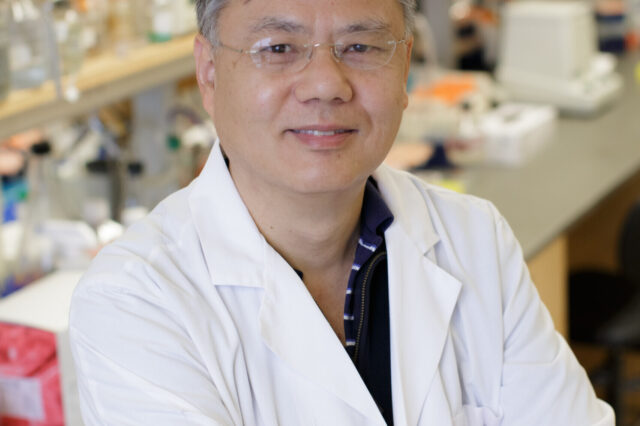Drug trio shows effectiveness against deadly type of breast cancer in mouse model

A three-drug combination has almost completely suppressed the deadliest type of breast cancer during testing in mouse models, according to a group that includes a University of Florida Health researcher.
Triple-negative breast cancer accounts for only about 20 percent of all breast cancer cases but carries the highest mortality rate. It disproportionately affects younger and African-American women in the United States, according to the American Cancer Society. Its name also belies its stubbornness: Triple-negative breast cancer cells lack crucial receptors that might otherwise allow hormonal and other treatments to work. Now, researchers say they have found a promising mix of compounds that significantly inhibits the growth of triple-negative breast cancer cells.
Tumor weights were reduced by about 80 percent in mice that received the drug cocktail for six weeks when compared with control mice, researchers found. Tumor development almost completely ceased three weeks after treatment began. That suggests the drug mixture could one day become a novel treatment when triple-negative breast cancer patients don’t respond to chemotherapy, said Shuang Huang., Ph.D., a professor in the UF College of Medicine’s department of anatomy and cell biology and a member of the UF Health Cancer Center. The findings were published recently in the journal Oncotarget.
“It completely arrested the tumor growth. That was a big surprise,” Huang said.
The three compounds are forskolin, a compound derived from the Indian coleus plant that is used to treat high blood pressure; probenecid, a gout medication; and rolipram, a potential antidepressant that was discontinued in the 1990s because of gastrointestinal side effects at high doses.
The three compounds work together to supply a high concentration of a signaling molecule known as 8-bromo-cAMP to inhibit cancer cell growth while also preventing it from flowing out of cells and breaking down. After treating cancer cells with the chemicals individually and together for four days, researchers found that the three-drug combination reduced cell growth by more than 80 percent compared with untreated cells.
Altogether, Huang said the findings show that the three drugs could someday be a secondary therapy if chemotherapy is ineffective.
“When you have all three of these compounds working together, there appears to be a significant effect on triple-negative breast cancer cells,” he said.
Next, Huang said he hopes to test the three compounds’ effects on tissue from patients’ primary tumors that are implanted in a mouse model. Depending on those results, a clinical trial using human patients could follow.
Researchers from the Georgia Cancer Center and the Shanghai University of Traditional Chinese Medicine collaborated on the research. Among others, the study was supported by grants from the National Institutes of Health and the National Science Foundation of China.
About the author
